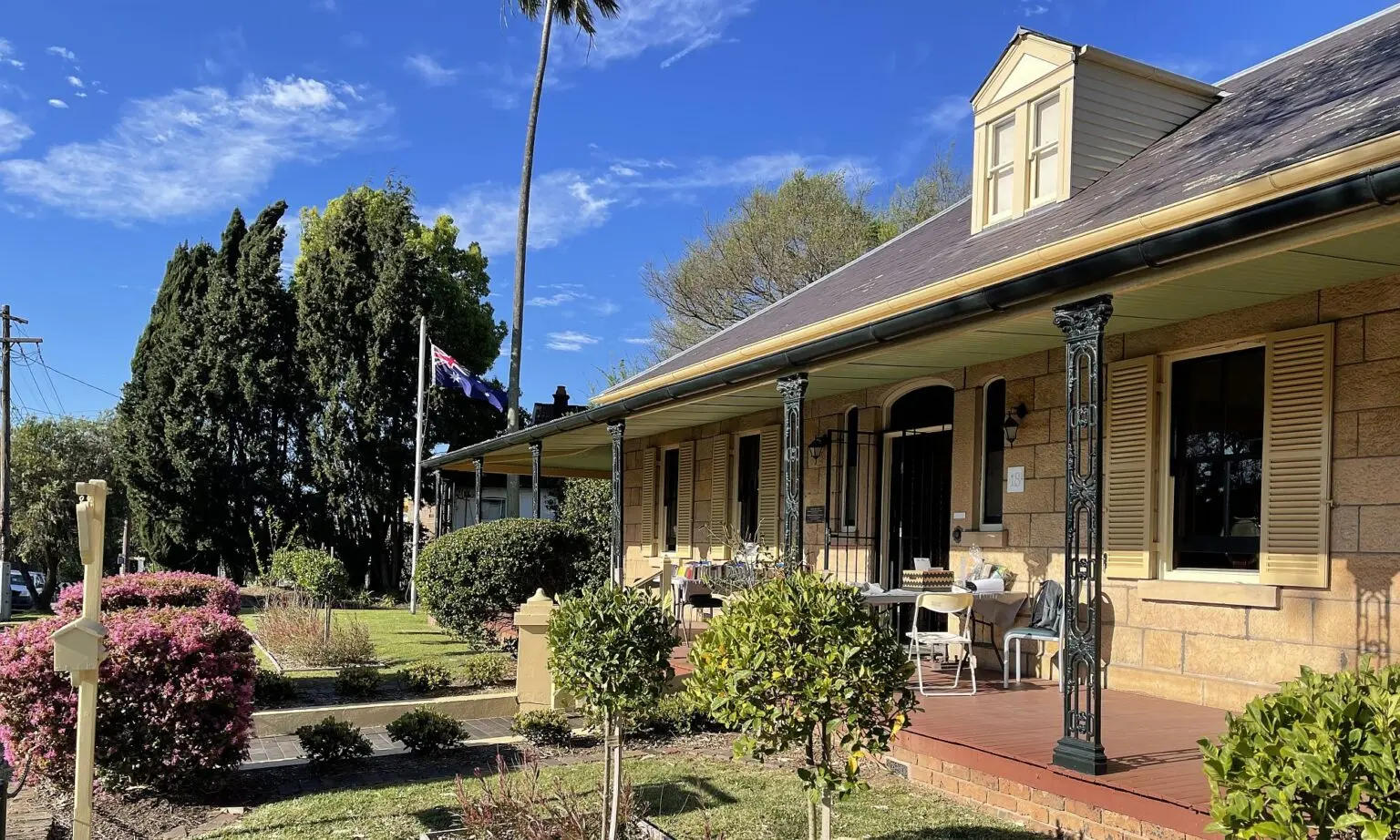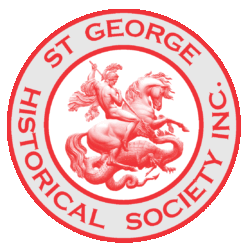by Bettye Ross
At a Service recently our Minister mentioned the Eddystone Lighthouse and said the third builder of this edifice had placed at its base a plaque stating “except the Lord build the house, the builders labor in vain” from Psalm 127:1. This Lighthouse (4th on the site) had been built by John Smeaton. and stood from 1759 to 1882 when it was replaced by one of much greater height.

But to begin at the beginning I had noticed a replica of Eddystone Lighthouse at Lydham Hall, and knew I had heard of such a landmark before but couldn’t recall anything about it, so I set to at the Mitchell Library and decided to find out what was famous about this Lighthouse.
Firstly of course it is the most famous Lighthouse in the world. It is 14 miles south-west of Plymouth and 9 miles south of Rame Head, Cornwall and stands on ridges of gneiss rock which have been battered about ceaselessly from the sea with 23 jagged pinnacles rising up above the water pointing towards the land. It can only be seen half a mile away and goes down into the depths of the English Channel on a very wide base. Seafarers named it the “Eddy-Stones” because of the turmoil of currents flowing through its rocky teeth. Some sea captains gave this reef such a wide berth their ship was wrecked on rocks of the Channel Islands or the rugged north coast of France.
In 1694 a patent was granted by the crown “to erect a Lighthouse or Beacon with a light upon the rock called Eddystone off Plymouth… as safe direction for ships hereafter to avoid that dangerous Rock upon which the lives of so many of our goad Subjects have perished.” Six years later Henry Winstanley from Saffron, Walden, Essex, a ship owner, inventor, showman, designer, conjurer, engraver and businessman commenced work on the first Eddystone Lighthouse. He had drawn plans up the previous winter and his men armed with picks set to fix 12 iron bars 3½ inches. diameter in a circular pattern on the rock. Pick after pick was discarded too blunt to proceed, but with perseverance six months later the holes were ready for their iron stanchions.
Work proceed slowly and Winstanley, working from the guard ship Terrible, which had been provided for him as an assurety of safety due to England being engaged in one of the numerous wars with France, was kidnapped. It seems the captain of the Terrible strayed from his position to check out a nearby French merchant ship with an eye to looting. However a thick fag descended preventing the French ship being captured and also the Terrible from returning to Eddystone. The kidnapped Winstanley was brought before Louis XIV who was concerned at the incident, punished the officer responsible and after endowing Winstanley with many presents sent him home with the alleged words “your work is for the benefit of all nations using the sea. I am at war with England, not with humanity.”
November 14, Henry Winstanley lit the first Eddystone Lighthouse’s tallow candles suspended in the lantern gallery of this 80 ft. tower. Constant wave and spray prevented the cement between the blocks of the solid base setting, often the tower shook and shuddered as frequent storms assailed it so Winstanley set to and increased its height after encasing the whole circumference with iron bands and also increasing the size and height of its base. This cost Winstanley personally and was finished in 1699 being known as the second Eddystone Lighthouse. He stated he could wish for nothing better than to be in it during “the greatest storm that ever was”.

Unfortunately in November 1703 whilst he was effecting some repairs to his prize one of the greatest storms ever in the British Isles hit and thousands of people died in its few short hours of devastation. Houses were swept away, ships as well, with 8,000 sailors lost, and inland rivers burst their banks. When the sun case the next morning the twisted remains of the 12 iron piles which held the base stood alone. Henry Winstanley had got his wish.
Two years later John Rudyard, a Cornishman in the silk trade, decided he would design and build the next Eddystone Lighthouse and enlisted the services of two expert shipwrights from Her Majesty’s Naval Dockyard at Woolwich. He was to build it of timber and when almost completed in July 1708 lit the first 24 tallow candles on his magnificent structure. Five years later he died but it stood in service for another 46 years until one of the three keepers named Henry Hall woke one night to find a fire in the lantern room. He was a man of 94 years of age, and tried to wake the other two keepers who had had a heave drinking night. Henry using only a leather bucket was flinging the water upwards towards the fire when finally his two companions woke and tried to help but the fire had too firm a hold. The lantern roof collapsed and a bullet of molten lead dripped from its remains towards the gaze of Henry Hall who was looking up. He screamed and said “God help me. I’m on fire inside!” The others were sceptical when Henry stated the molten lead had gone down his throat and the three resumed their efforts with Henry unable to communicate. The inferno was seen from the land and a boat set out to pick the three keepers up but it was not for hours that the men were rescued.
Henry Hall was put under medical attention complaining and mumbling about his awful experiences but it was put dawn to the dreadful experience along with its shock in one of such advanced years. Henry spent 12 days convalescing before he suddenly died. The Doctor to allay all doubts of Henry’s declarations performed a post-mortem only to find a flat piece of lead weighing 7 ounces 5 drams in the pit of his stomach. Today this can be seen in the Royal Scottish Museum, Edinburgh.
John Smeaton of Yorkshire was a mathematical instrument maker who also turned his talents to engineering. He decided to build a new Eddystone Lighthouse of stone and work began August 1756 and was an engineering feat. At last after three gruelling years of conflict between man and nature, the Eddystone reef was once again conquered using 1,493 blocks of stone weighing almost 1,000 tons, 700 marble joggles, 1,800 oaken trenails and £40,000 to do it. He placed an inscription on the last stone “24th August 1759 Laus Deo” as well as the text from the Psalms. Some years later he commented that the glow from the lighthouse appeared 7 miles away.

Smeaton’s Eddystone Lighthouse stood from 1759 until it was decided to build another taller and larger one. This 5th and last one, still standing, was built by James Douglass 1882 and differed from Smeaton’s use of trenails and dowels to Douglass preferring dovetailing the blocks of stone together.
So next time you are at Lydham Hall take time to see the replica of Eddystone Lighthouse in the cabinet above the stairs and to the right of the back dormer window and dwell for a little time on the mammoth task each of the foregoing builders undertook.

SOURCE: The Rock Lighthouses of Britain: The End of an Era? by Christopher P. Nicholson 2nd Ed. Pub. by Whittles of Caithness, 1995
This article was first published in the September 2000 edition of our magazine.
Browse the magazine archive.

